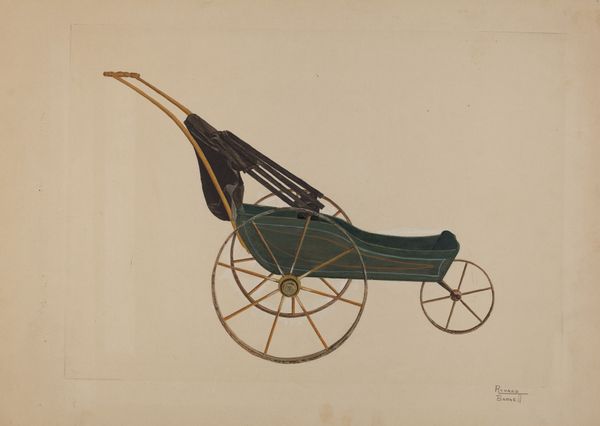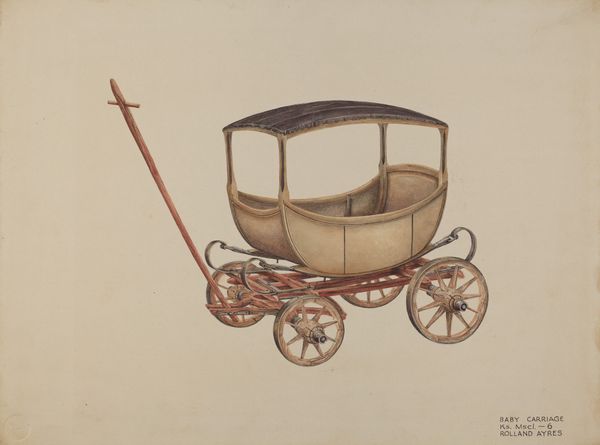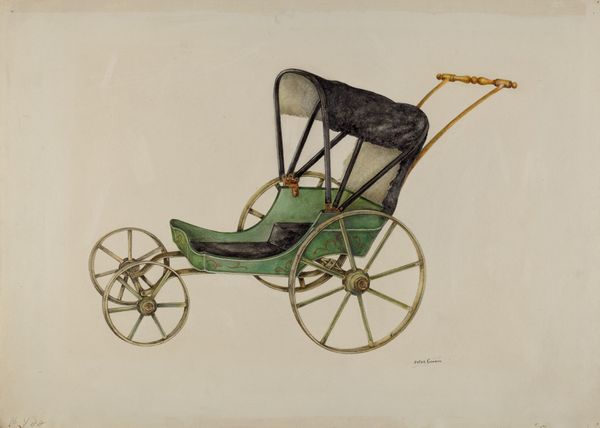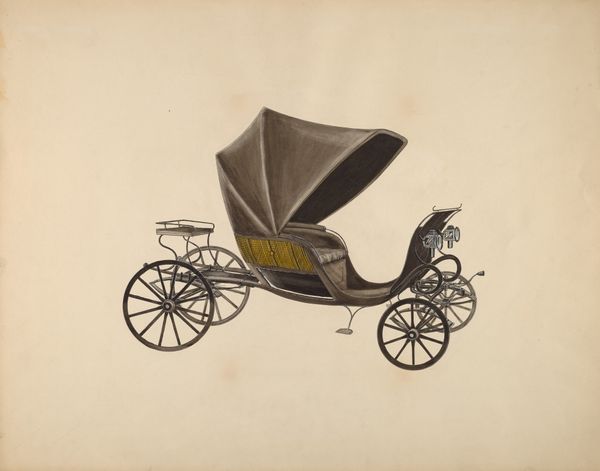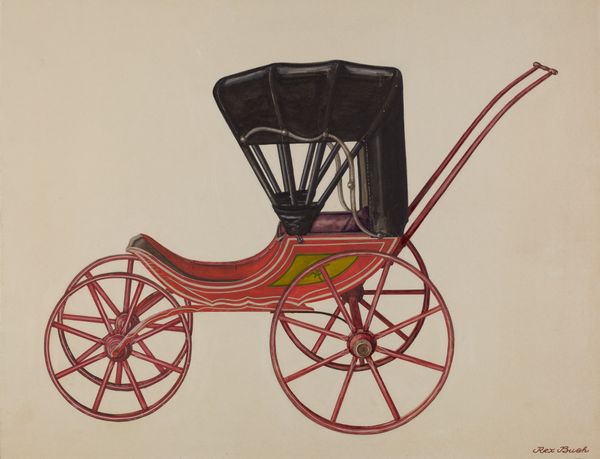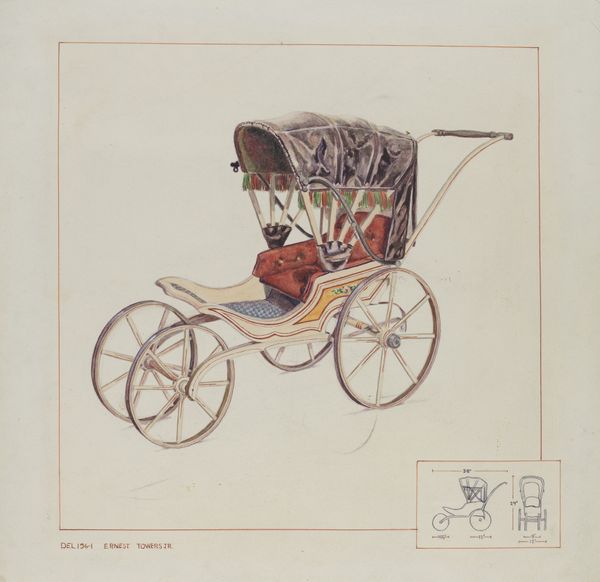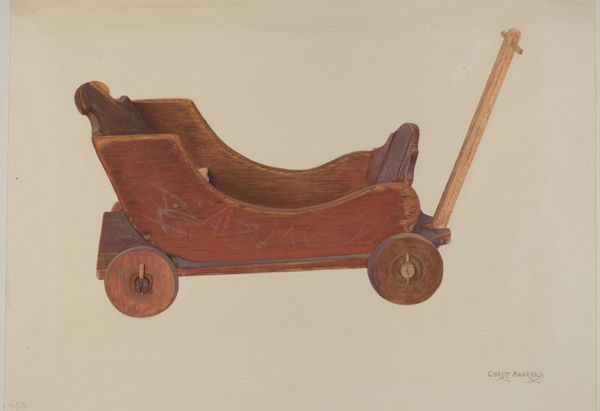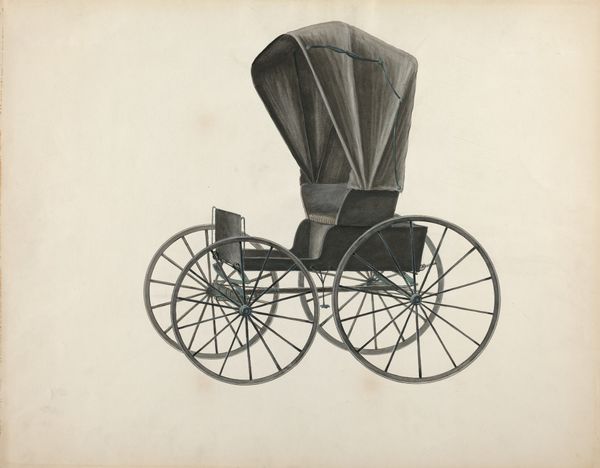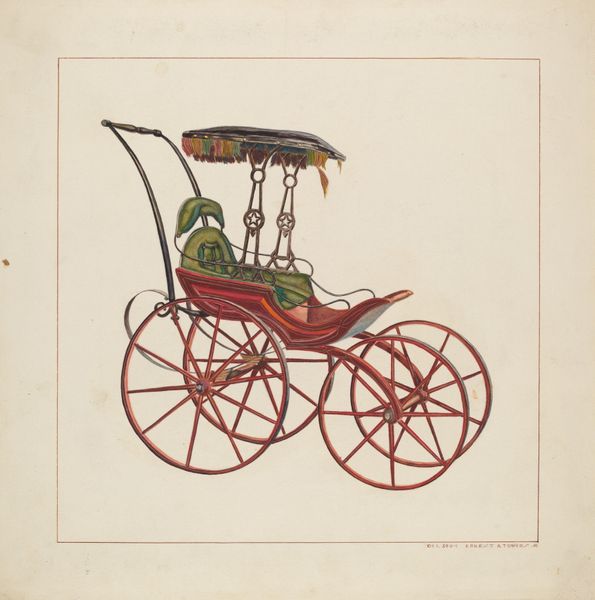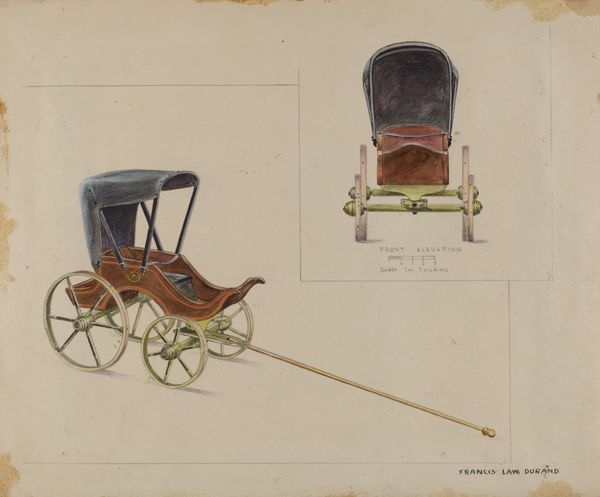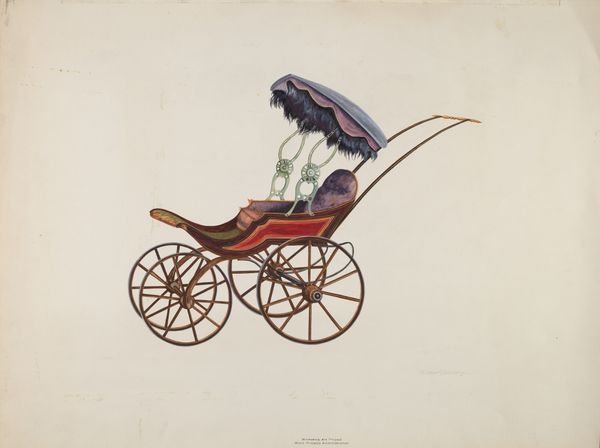
drawing, watercolor
#
drawing
#
charcoal drawing
#
watercolor
#
pencil drawing
#
watercolour illustration
#
academic-art
#
watercolor
#
realism
Dimensions: overall: 35.5 x 45.7 cm (14 x 18 in.) Original IAD Object: 21 1/2" high; 12" wide; 24" long
Copyright: National Gallery of Art: CC0 1.0
Curator: I see it and feel immediately transported... like tumbling down memory lane on a rusty tricycle. This is Fred Hassebrock’s “Baby Carriage,” made sometime between 1935 and 1942, in watercolor, charcoal, and pencil. It is sweet and a touch melancholic to my eyes. Editor: My initial read points more to form and construction, though your read of wistful reminiscence intrigues me. Looking at the underdrawing – seemingly charcoal – gives a visible substructure that Hassebrock then layers with a thin wash. You can see the marks of making very directly. Curator: I agree, there is such tangible visibility of process! It's fascinating, isn’t it? The way the texture of the paper itself becomes part of the image... almost like looking at the memory itself fading at the edges. Editor: Right. Hassebrock appears to be meticulously rendering an object of mass consumption during the depression era. The piece almost operates as a catalogue entry—a form usually delegated to anonymous makers. Curator: Perhaps this piece suggests that even these common objects hold significant emotional and historical weight. The somewhat subdued tones, and the slight imperfections only highlight this all the more. It’s not just a pristine depiction; it's a character study. Editor: That makes me reconsider it as a quiet kind of rebellion, assigning artistic value to something quotidian. We're not that far here from consumer critiques of someone like Warhol. Curator: Absolutely, and now that I see it from your perspective it brings this simple depiction into a broader scope of critique on the nature of labor and value. Thank you, the material processes combined with social critique creates another fascinating way of thinking about "Baby Carriage." Editor: Ultimately, seeing art through this perspective helps uncover how makers navigate complex socioeconomic structures, underscoring their silent but assertive agency. Curator: Indeed. It’s a gentle but potent reminder of the profound connection between objects, memory, and, well, being pushed in that carriage towards the future... or past.
Comments
No comments
Be the first to comment and join the conversation on the ultimate creative platform.
